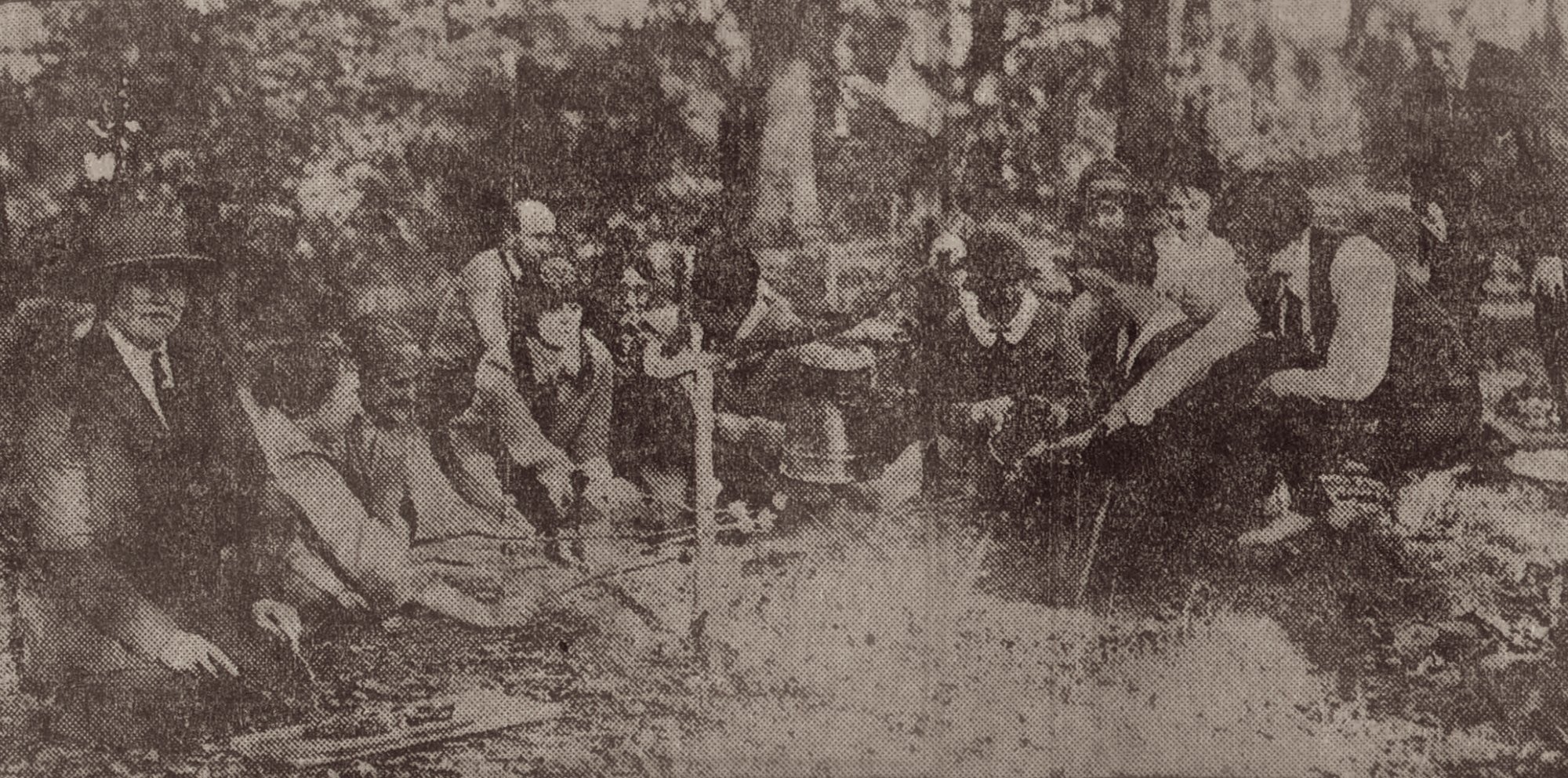S'mores II

A year ago, I was close to posting here about the intersection of archives and s’mores, but I kept bumping into what one of my former editors, Jacqui Banaszynski, has called “answers that trip over each other in a rush of contradictory certitude.”
I saw in those gaps a potential story. My interest ratcheted higher as I found more primary source documents. And the newsletter-that-was became my next National Geographic feature.
That narrative focused on Cookie Moore, an English woman who arrived in the U.S. in 1923 to help the Girl Scouts expand their camping skills. Cookie called America her “spiritual home,” and she arrived during an era of vast changes for our stomachs.
Americans were farmers for much of the country’s history. They slaughtered and prepared meats, baked breads and pies, canned fruits and vegetables. Food made on the farm stayed on the farm, and any bulk staples were available at the general store with a neighbor behind the counter. Then population shifts around the turn of the 20th century transformed the U.S. from a nation of food producers into a nation of food consumers.
Mass production filled the gap in an era of scattered regulations. Profits beckoned... Flour was cut with chalk. Cheese was colored with lead.
“Can we trust food that’s made in distant factories by people we don’t know?” explains Helen Veit, associate professor of history at Michigan State University.
“The answer for a long time had been no.”
Federal legislation to protect food supplies began to restore a fractured public faith. The need to rebuild trust also offered manufacturers an opportunity for a new commercial strategy. Companies positioned their products as clean and fresh by touting packaging innovations such as sealed paper cartons, waxed wrappers, and air-tight tins. Individual packages led to another novelty: brand names.
National Biscuit Company (later Nabisco) used more than 1,000 horse-drawn vehicles in 1922 to deliver products like Saltines and Uneeda graham crackers. Cookie Moore would have seen zero horses — they were retired completely by 1923. “We endeavor to deliver to the grocer who is 100 miles from our agency as soon, practically, as to the grocer next door to it,” the company proclaimed, “and to do this we must use motor trucks, regardless of their cost.”
Some of the first grocery store chains were capitalizing on their larger footprints with plenty of space for so many different brand-name items. The stores also introduced a model that allowed customers to physically pick up what they wanted instead of relying on a clerk, like the old-fashioned general store.
So imagine a middle-aged housewife, a Girl Scout leader in Rhode Island, shopping for herself staring at rack of names she’s never heard of, all claiming to be as wholesome as the food from the farm of her childhood.
Or new! And improved!
To entice her to buy Campfire marshmallows instead of Angelus or Bunte, companies launched national advertising campaigns. No sources said which brand the group packed for the camp near Providence, R.I., but based on months of research for my story, the top of this post shows the *first photo* of s’mores.
It was published in October 1924, a week after Cookie shared the confection at the eastern regional Girl Scouts conference. A cluster of marshmallows mid-toast hovers on sticks over flames in the center of the image. The caption didn’t note the food on view; the evidence appeared in an earlier newspaper item.
In 1925, Cookie printed her s’mores recipe, Campfire Marshmallow Co. included a version under a different name in one of its recipe books (then a common tactic for food ads), and Girl Scouts across the country raved about their experiences with three simple ingredients — at the confluence of marketing, mass production, and a little outdoor magic.
—
This newsletter was written on the traditional lands of the Piscataway and Nacotchtank.